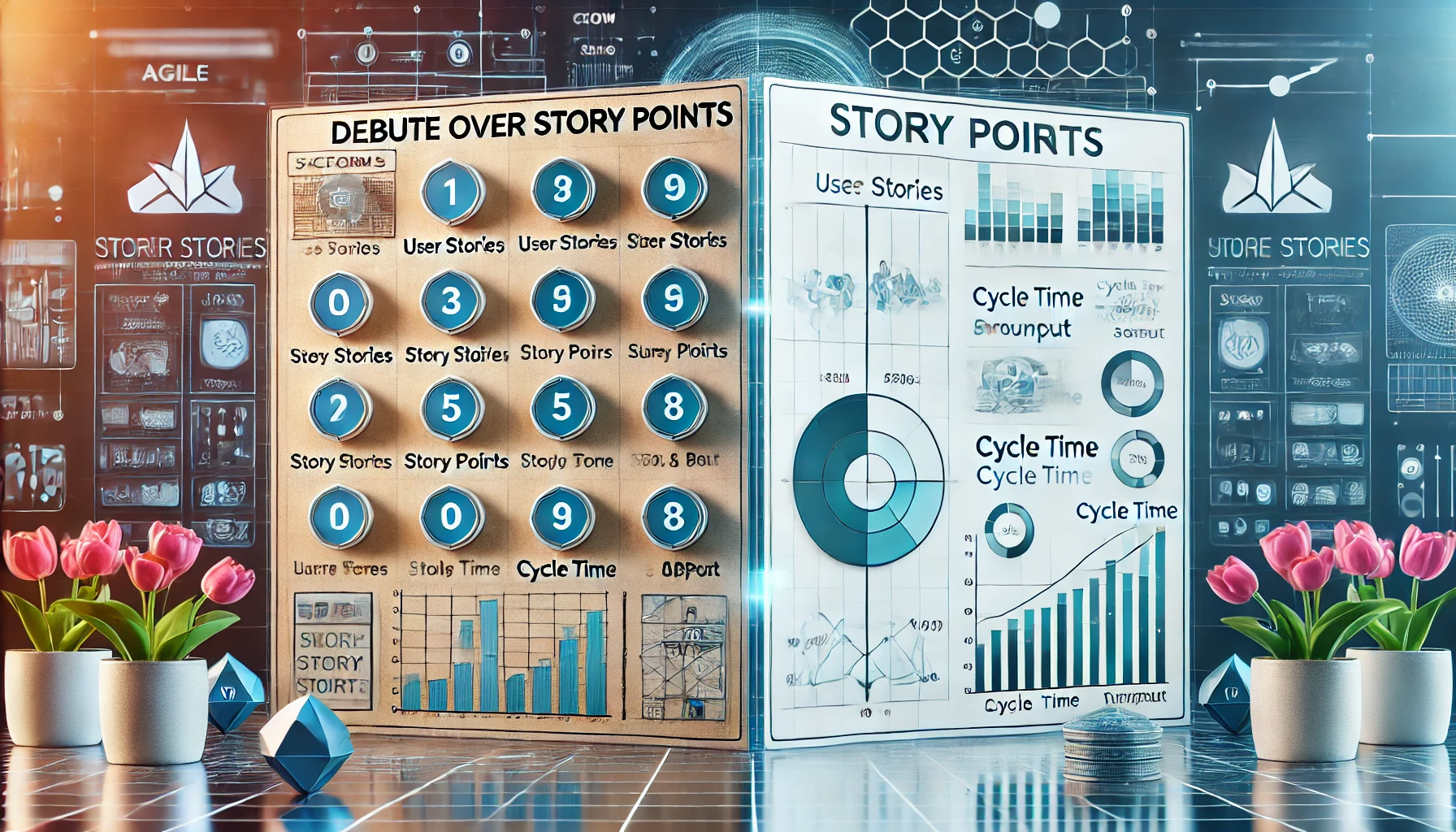Are Story Points Really Helping Your Team?
The other day, I had a candid conversation with a colleague about story points—a widely used (and often misused) agile practice.
If you’ve known me for any length of time, you probably know that I have a healthy skepticism toward story points. While they serve as a great conversation starter, at the end of the day, everything’s made up, and the points simply don’t matter.
Yet, many teams continue to rely on them, often in ways that deviate from their original intent. So, what’s the alternative?
This conversation led us down the path of flow metrics, a more meaningful way to measure work, optimize delivery, and provide stakeholders with better insights.
The Inconsistency of Story Points
The conversation started with a simple question: “Is there any consistency in how our organization uses story points?”
The short answer? No.
And honestly, that’s a good thing. Teams should have the freedom to define their own way of working rather than being forced into a rigid structure that might not fit their needs.
Still, many people (including agile practitioners and engineers) misunderstand what story points were originally meant to represent.
A Quick Refresher: What Are Story Points?
Story points were initially designed to be a relative measure of three key factors:
- Complexity – How intricate is the work?
- Effort – How much effort is required to complete it?
- Uncertainty – How much is unknown or ambiguous?
Teams often use Fibonacci numbers (1, 2, 3, 5, 8, etc.) to assign story points, comparing one piece of work to another.
However, over time, many teams have mistakenly equated story points with time—turning them into a proxy for daysrather than a measure of effort.
- 1 point = 1 day
- 5 points = 5 days
- 8 points = 8 days
This shift defeats the purpose of story points and introduces false precision, making planning more fragile and less reliable.
So, the question becomes: If not story points, then what?
The Case for Flow Metrics
My colleague was intrigued and asked a critical question: “If we don’t use story points, how do we measure and communicate our work?”
The answer: Flow metrics and flow principles.
Flow metrics provide data-driven insights into how work moves through a system. Instead of estimating arbitrary point values, we can measure actual performance trends to answer key questions:
1. How much work do we complete? (Throughput)
2. How long does work take to finish? (Cycle time and lead time)
3. Where are our biggest delays? (Wait time analysis)
4. What types of work are we doing? (Work classification and forecasting)
Applying Flow Metrics in the Real World
For my colleague’s team—procurement specialists—the challenge was clear: They needed a reliable way to estimate how much work they could complete and how long it would take.
Step 1: Measuring Throughput
The first step was simple: Measure how much work is completed over a specific time horizon.
This could be:
• Weekly throughput
• Monthly throughput
• Quarterly throughput
Additionally, the team could track how much work is completed independently versus how much depends on other teams—which is critical for identifying blockers.
Step 2: Tracking Cycle Time and Lead Time
Next, we tackled duration metrics—how long work actually takes from start to finish.
To do this, the team could track:
1. Total cycle time – The time from request to completion.
2. Active work time – How long it takes once work actually begins.
3. Waiting time – How long work is blocked, waiting on another team.
By breaking down cycle time into meaningful components, the team could better predict delivery timelines and identify process inefficiencies.
Step 3: Categorizing Work
Finally, we discussed how to classify and visualize different types of work.
By grouping work into categories, the team could:
• Better understand demand patterns
• Improve forecasting accuracy
• Adjust expectations based on work type
For example, if procurement approvals typically take two weeks, but contract negotiations take six weeks, this insight could help set realistic expectations with stakeholders.
Resources to Go Deeper
By the end of our conversation, my colleague felt empowered and inspired to explore flow-based metrics further. I pointed them toward some great resources that continue this discussion, including:
📺 Drunk Agile YouTube Channel – A fantastic deep dive into agile practices, story points, and flow metrics.
🎙️ Drunk Agile Podcast on Story Points – An insightful discussion on why story points often fail.
📖 “Actionable Agile Metrics for Predictability” by Daniel S. Vacanti – A must-read for anyone interested in flow-based metrics.
Final Thoughts: Move Beyond Story Points
Story points may work for some teams, but for many, they introduce more confusion than clarity. Instead of estimating abstract numbers, teams should focus on measuring actual performance with flow metrics.
✅ Track throughput instead of velocity.
✅ Measure real cycle times instead of estimating.
✅ Classify work types for better forecasting.
If you’re stuck in a story point rut, consider experimenting with flow-based metrics instead. You might be surprised at the clarity and predictability they bring to your team.
What’s Your Take?
I’d love to hear your thoughts!
💬 Does your team still use story points?
💡 Have you experimented with flow metrics?
Drop a comment below and let’s continue the conversation!

Leave a Reply